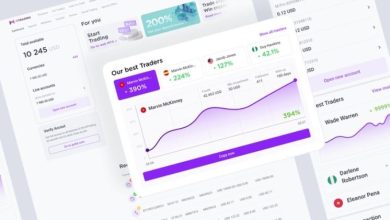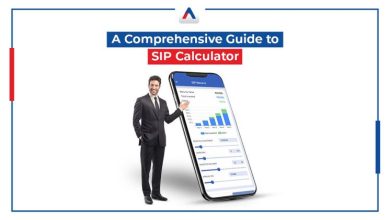Gain an Edge in Decision-Making with Real-Time Data Analysis in Trading

Introduction
Real-time decision-making with knowledge is vital for success in the hectic world of financial markets. For traders, real-time data analysis has become a crucial best investing apps instrument, offering insightful knowledge and enabling quick, data-driven decision-making. Traders can grow more competitive, take advantage of market opportunities, and successfully manage risks by using the power of immediate data analysis. We will go into seven specific areas in this post that demonstrate how real-time data analysis helps traders make better decisions.
Role of Real Time Data Analysis in Trading
- Quick Access to Market Patterns:
Traders can gain the latest updates on price fluctuations, market patterns, and trading activity through real-time data analysis. Real-time monitoring of steps in numerous financial instruments is possible for traders using sophisticated data analytics systems and tools. With quick access to market data, traders can discover new trends, structures, and oddities, which gives them important information for making decisions.
Traders could jump on opportunities as they present themselves and modify their approach by remaining up to date with real-time market conditions. Real-time data analysis allows traders to make swift, well-informed choices to optimize profits, whether they recognize abrupt price swings, figure out trading signals, or detect alterations in market sentiment.
- Better Risk Management:
In the trading industry, recognizing and reducing risks are essential duties that are greatly aided by real-time data analysis. Traders can keep an eye on the markets, evaluate potential risks, and quickly put risk mitigation techniques into action by continually analyzing market data in actual time. In volatile market circumstances, this preemptive method of risk management assists traders in safeguarding their cash and reducing losses.
By using developed risk factors, real-time data analysis allows traders to create mechanical warnings and triggers. By informing traders of important market occurrences, changes in prices, or departures from their investment plans, these alerts enable traders to reduce risks right away. Through real-time data analysis, traders could stay ahead of possible dangers by implementing alterations to stop-loss orders, insuring positions, and abandoning deals.
- Finding Trading Opportunities:
Real-time statistical analysis gives traders the power to quickly spot trading opportunities and take advantage of financial inefficiencies. Traders are able to identify patterns, developments, and relationships in real-time market data that could lead to profitable trading opportunities. Real-time data analysis helps traders take decisive measures in dynamic financial markets, whether they are finding exchange possibilities, taking advantage of price divergences, or implementing high-frequency trading methods.
The detection of trading chances could be further improved with the use of advanced analytics techniques like artificial intelligence and deep learning. These algorithms are capable of generating anticipated insights to guide trading choices, analyzing huge amounts of real-time data, and spotting minute trends. A trader could become a competitive advantage and open up new alpha sources in the markets by using these innovative instruments.
- Trading Strategy Optimization:
In accordance with changing market circumstances, traders could continually optimize their trading strategies with the use of real-time data analysis. Traders are able to evaluate the efficacy of their tactics and make necessary data-driven modifications by examining real-time market data and indicators of performance. Trading tactics remain flexible and sensitive to shifting market conditions thanks to this continuous optimization process.
Additionally, traders could replicate and backtest their approaches in immediate time market circumstances thanks to real-time data analysis. Traders can enhance their methods and find the most effective settings for maximizing profits and minimizing risks by evaluating different settings, factors, and situations. Traders can remain at the peak of trends and keep an edge in the markets by using this continuous method of strategy optimization.
- Increased Implementation Rate and Efficiency:
In the quick-paced world of trading, time is of value. Real-time data analysis gives traders the ability to execute deals more quickly and effectively. Traders are able to execute orders quickly and take advantage of opportunities that come and go by using complex trading systems and current market information feeds. Real-time data analysis also makes algorithmic trading methods easier to implement. In these strategies, trades are automatically conducted based on predetermined criteria and market circumstances.
Traders can also optimize order fulfillment techniques for cost reduction and efficiency maximization by continuously monitoring order book factors, liquidity, and slippage using real-time data analysis. Real-time data analysis gives traders the ability to carry out their plans with accuracy and agility, whether that means managing order flow effectively, completing deals at the optimum prices, or cutting trade execution latency.
- Sentiment evaluation Improves Decision-Making:
Traders can apply sentiment analysis to get an understanding of investor behavior, crowd psychology, and market mood by integrating it into how they make decisions via real-time data analysis. Traders can determine market mood and spot probable events that might move the market by continuously examining news items, social media feeds, and additional sources of market emotion.
Trading professionals could profit from the practical knowledge that sentiment evaluation algorithms can provide by identifying sentiment patterns, sentiment polarity, and sentiment oddities in text data. Traders can anticipate market responses, changes in emotion, and possible trading opportunities by keeping track of real-time market sentiment. Real-time sentiment analysis enables traders to make well-informed choices based on market psychology, whether it is assessing market mood before major information releases or identifying sentiment-driven price moves.
- Connection with Advanced Innovations:
Real-time data analysis easily blends with big data analytics, machine learning, AI, and other cutting-edge technologies, opening up new avenues for traders. With the use of these tools, traders can now examine massive amounts of real-time data, identify intricate patterns, and provide predicted insights that help guide their trading choices.
Algorithms using artificial intelligence can analyze current market information to find trade trends, forecast price changes, and automatically optimize trading tactics. With the help of fresh data, machine learning algorithms can change and develop, thus improving the precision and potency of trading models. Trades could benefit from useful knowledge of market patterns, correlations, and oddities via the real-time processing and analysis of large datasets using big data analytics tools.
Conclusion
For traders looking to get a competitive advantage in the fast-paced, dynamic realm of financial markets, analysis of real-time data Espresso online trading app has grown into an essential tool. Real-time data analysis will become more and more essential in determining trading and investing strategies in the coming years as technology develops and data analytics skills grow. It is not only a strategic need for traders to succeed in today’s intricate and quickly changing financial markets but also a competitive advantage to embrace real-time data analysis.


